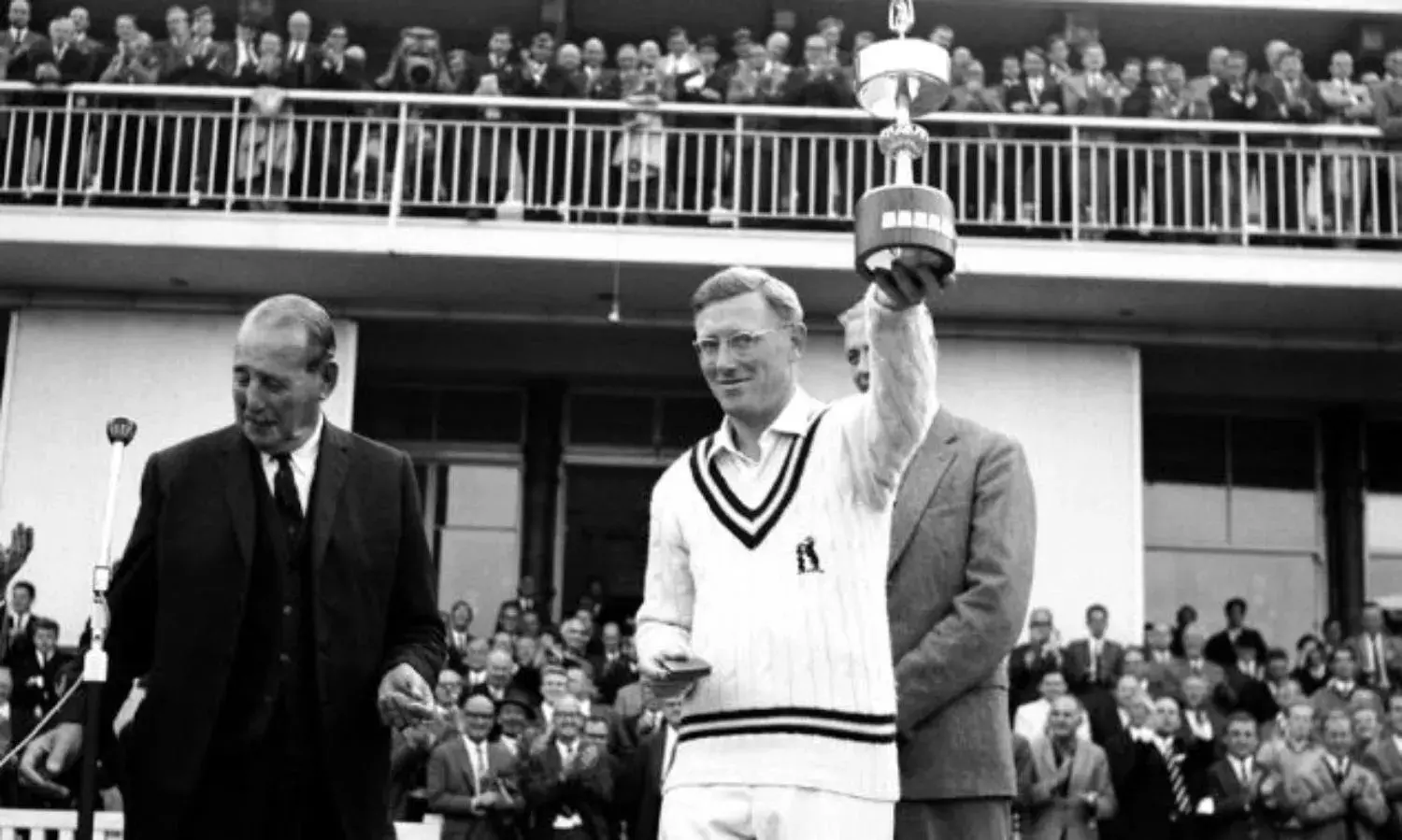When England’s Ten Man Team Proved a Match for India
Down Memory Lane

Ever heard of a Test team playing with ten men? Or members of the opposition fielding for that squad? And yet that was the unenviable situation England found themselves while taking on India in the second Test at the Brabourne stadium in Bombay (as Mumbai was then known) in January 1964.
The problems for the visitors surfaced in the first Test at Madras (as Chennai was then known). On the third day it was clear that Jim Parks and vice captain Micky Stewart would not be able to play at their appointed places in the batting order because of severe stomach disorders. As a result Brian Bolus and Ken Barrington had a jam packed Sunday crowd at the Corporation stadium bored to death while piecing together a fourth wicket partnership of 119 runs in 296 minutes. Little wonder Bapu Nadkarni was able to send down a world record 21 successive maidens on his way to the eye rubbing innings figures of 32-27-5-0. There was a strategy however behind this ultra defensive batting. Since the following day was the rest day it would give Stewart and Parks that much more time to recover.
Bolus finally fell a few minutes before close on the third day for 88 and after the rest day Parks feeling better came in at No 7 and Stewart still very weak and with a runner entered at No 10. England were ultimately all out for 317 in reply to India’s 457 for seven declared and came out with an honourable draw.
Worse however was to come in the second Test which followed soon after. Barrington had suffered a fractured finger in the game against West zone sandwiched between the two Tests and was ruled out of the tour. On the morning of the match in quick succession John Edrich, Phil Sharpe and John Mortimore were ruled out due to stomach disorders. This at least meant that there were no selection problems for England as the skipper Mike Smith had to just pick the remaining eleven players of the party who were fit.
As the saying goes misfortune never comes alone. Already beset with problems England lost the services of Stewart down with dysentery at tea on the opening day. This in effect made England a ten man team on the field and the morale could not have been lower. Indeed Stewart and Barrington flew back home and the beleaguered touring squad desperately called for reinforcements for the third Test at Calcutta scheduled to begin a couple of days after the match at Bombay.
Colin Cowdrey and Peter Parfitt made hasty arrangements to leave for India and bolster the team but in the meantime a Test had to be played and England’s plight could well be imagined. Not only were they down to ten men but the composition of the side was desperately ill balanced. The side comprised two specialist batsmen in Bolus and Smith, two wicket keepers in Parks and Jimmy Binks, four fast medium bowlers in David Larter, John Price, Jeff Jones and Barry Knight and two spinners in Don Wilson and Fred Titmus. Certainly anything but the right combination for Indian conditions. Indeed the side was forced under the adverse circumstances to field three debutants in Price, Jones and Binks.
India had won the toss and were midway through their first innings when Stewart left the field. A request was made by the England team management for a substitute and in the two innings there was the unusual spectacle of two Indians Kripal Singh and Hanumant Singh who were among the reserves alternating in fielding for the visitors even if they did not figure in the catchers’ list in the two innings.
It speaks volumes of England’s doughtiness that they managed to draw the game again honourably through resolute batting and purposeful bowling. One should also play tribute to Smith whose leadership skills had been severely tested since the crisis broke. His dry humour, his taciturnity to take the rough with the smooth and above all his ability to lift the morale of his team members when things were looking particularly bad earned him plaudits aplenty.
India led off with 300 and England batting one short replied with 233. It was a typically dogged England performance with the runs being scored at 1.8 an over but few complained given what the tourists were going through. The Indian captain Nawab of Pataudi made a bold declaration on the fourth evening leaving England to get 317 runs for victory in 350 minutes knowing fully well that the visitors were in effect already one down. But putting up an even more determined show England were 217 for three when stumps were finally drawn, the runs being scored this time at 1.5 an over.
England’s ultra defensive approach was not criticized as it normally would have because of the unenviable circumstances they had to endure and it was in fact India’s bowling that came in for much flak for not being able to bowl out a ten man team twice. It was a pretty strong attack on the face of it for the spin bowling comprised Salim Durrani, Chandu Borde, BS Chandrasekhar and Nadkarni. The pace bowling was non-existent as it was during much of the period. Admittedly the pitch was not bowler friendly but the rather inexperienced England attack had utilized the conditions better taking 18 wickets to India’s 12.
Their morale restored both by the unexpected result and also by the fact that reinforcements had arrived England matched India in the three remaining Tests which were also drawn. A series of five drawn Tests is not normally fondly remembered but England’s courage in adversity at Bombay is still recalled by those who were around at the time.



